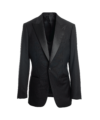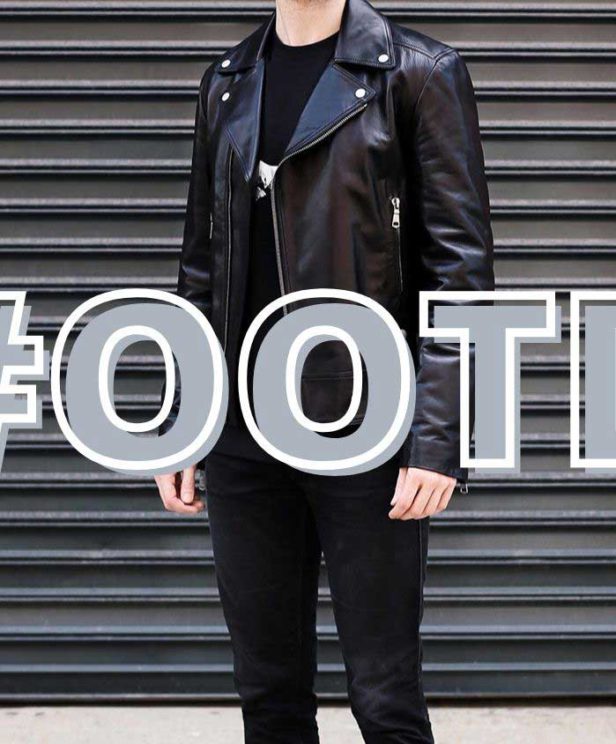Tuxedo Style Choices Simplified: The Ultimate Guide
Share
Style Your Tuxedo Your Way
When you hear the word tuxedo, chances are you think black tie wedding, gala dinner, or another classy event. Iconic and timeless, the classic tuxedo can seem inflexible to those who are more accustomed to wearing modern suits. This is because tuxedos have a very specific style that, oftentimes, gives them the feeling of “sameness.”
But there are multiple ways to add style and personality to your tux without dressing it down or looking sloppy. From the lapels to the fabric stripe, every detail has a huge effect on the look, feel, and overall vibe of your tuxedo.
With that in mind, it’s time for you to become the expert on how to style your tuxedo to best represent your personality and style. Not only will you look amazing in your tux, but you’ll feel comfortable and confident as well. Plus, you’ll be ready for any event that calls for it.
Tuxedo Jacket: Lapel Style
The lapel (collar of the jacket or shirt) is the most distinguishing feature of a tuxedo. There are two different lapel styles we recommend:
- Peaked lapel
- Shawl lapel
A peaked lapel extends upward and forms a peak that points toward the shoulders, thus the name, peaked lapel. As the most classic choice for the tuxedo jacket, it’s never a bad option.
Next, there’s the shawl lapel. This option has a rounded shape that gives the jacket the same level of elegance as a peaked lapel without being too stiff. If you’re going for a casually elegant vibe, it’s a great stylistic choice.
Lapel Fabric
While the classic tux is generally made out of worsted wool, rayon, or polyester, the lapels are typically satin or grosgrain.
A satin lapel will have a smooth, shiny appearance. A grosgrain lapel is slightly ribbed for a more textured look that isn’t quite as lustrous. Grosgrain is also generally considered more refined than satin.
Both of these lapel fabric options are classic, so there’s really no wrong choice here. However, if you opt for a shawl collar, the satin lapel will complement the style the best.
Lapel Width
The width of your lapel should be proportional to two things:
- Width of your body
- Width of your face
So, if you have a broad frame and face, the lapel should be wider. But if you have a narrower frame and face, the lapel should be slimmer.
This is extremely important because, for a tuxedo to look perfect, everything needs to be balanced. Nothing can throw off that balance more than a lapel that’s the wrong size.
One of the biggest mistakes people make when it comes to the tuxedo jacket is choosing one with a lapel that’s too narrow. If you’re not sure what size to choose, here’s the ideal width for the two most common lapel types:
- Peak lapel width: 3.5 to 4 inches
- Shawl lapel width: 3 to 3.5 inches
There are some cases where the above measurements don’t quite work. For example, if your chest size is no more than 38 inches across, you probably look best in a narrower lapel that’s around 2.5 inches wide.
When in doubt, take a tape measurer and measure the width of your chest to find your sweet spot.
Tuxedo Jacket: Single-breasted vs. Double-breasted
Now, it’s time to decide between a single-breasted and a double-breasted tuxedo.
- Single-breasted jacket: The classic single-breasted jacket is characterized by a single column of buttons and very lightly overlapping fabric. It’s the most traditional and conservative choice, so it looks good no matter what.
- Double-breasted jacket: Another classic style, the double-breasted jacket has more overlapping fabric and two sets of buttons. It has a much more formal appearance than the single-breasted one.
Since you can’t really go wrong with either option, the choice comes down to your personal preference, style, and comfort zone.
That said, if it’s your wedding day and you’ve never worn a double-breasted jacket before, the single-breasted jacket is the safer choice. With it, you’ll still look your best while feeling comfortable and confident.
Of course, if you’re ready to try something new and step outside of your comfort zone, give the double-breasted jacket a try. You never know what works for you until you try it, after all.
Tuxedo Jacket: Pocket Style
The only acceptable pocket style for a full tuxedo is the jetted pocket. Unlike the flap pocket or patch pocket, the jetted pocket has a very simple, clean line. The trim of the pocket should always match the fabric of the lapel.
Tuxedo Jacket: Button or Buttons
While most men’s suits have two or even three buttons, the tuxedo jacket is a bit different. In general, here’s what to expect:
- Single-breasted tuxedo jacket: One button
- Double-breasted tux with a peak lapel: Four or six buttons
- Double-breasted tux with a shawl lapel: Two or four buttons
Just like with the trim around the pocket, the button’s facing (fabric around the button) should match the fabric of the lapel.
Tuxedo Jacket: Vent Styles
A vent refers to the opening on the bottom back of the jacket. There are three main types of jacket vents: no vent, a single vent, and a double vent.
- No vent is the most traditional option. It’s best for men who either have or are going for an old-school vibe.
- The double vent has openings on both sides and is an updated take on the classic style. It’s perfect for anyone who has a classic style and a modern sensibility.
- The single vent has a single slit in the center and offers a certain simplicity to the overall look.
Most tuxes have either no vent or a double vent, so it’s unlikely you’ll find many options with the single vent.
Tuxedo Pants: Side Adjusters
Tuxedo pants do not have belt loops. Instead, they have side adjusters that give them a simple, elegant look.
In terms of style, there isn’t a lot you can do with the side adjusters of your pants. However, you can use them to make fine adjustments to the waist size by either loosening or tightening them. This will give your pants a more tailored, refined look.
Tuxedo Pants: Fabric Stripe
All tuxedo pants have a fabric stripe running down the side. If your pants don’t have this feature, they’re not true tuxedo pants. As with the pocket trim and the button facing, the fabric of the stripe should always match the lapel fabric.
Tuxedo Pants: Bottom Finishing
Tuxedo pants should always have a plain bottom finishing. The clean line matches the cultivated simplicity and sophistication of the tuxedo. Plus, it’s the most formal way to finish the bottom of any pants.
Tuxedo Shoes
The classic tuxedo calls for black shoes made from either calfskin or patent leather. Both options are quite elegant and pair well with the entire ensemble, so it’s up to you what you choose.
Tuxedo Accessories
To complete the look or add a bit more of your own style to your tuxedo, here’s what you need:
- French cufflinks
- Black bowtie
- Studs (if you want an alternative to the standard tuxedo shirt buttons)
- Black cummerbund (when wearing a single-breasted jacket)
- Simple pocket square
- Lapel pin
Bottom Line
Ultimately, the tuxedo is a staple of formalwear, especially when it comes to weddings and other black tie events. And, even though it’s quite a structured look, that doesn’t mean you can’t play around with some of the smaller details to achieve your preferred style.
By understanding and paying attention to each aspect of the tux, you can really nail whatever style you’re going for. Even a simple change, like going with wide vs. narrow lapels, can make all the difference in how you look and feel.















































